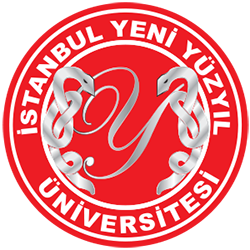| dc.contributor.author | Zarbaliyev, Elbrus | |
| dc.contributor.author | Sevmiş, Murat | |
| dc.contributor.author | Kilercik, Hakan | |
| dc.contributor.author | Çelik, Sebahattin | |
| dc.contributor.author | Aktaş, Sema | |
| dc.contributor.author | Çağlıkülekçi, Mehmet | |
| dc.contributor.author | Sevmiş, Şinasi | |
| dc.date.accessioned | 2023-02-20T10:00:58Z | |
| dc.date.available | 2023-02-20T10:00:58Z | |
| dc.date.issued | 2021-09-25 | |
| dc.identifier.citation | Zarbaliyev, E., Sevmiş, M., Kilercik, H., Çelik, S., Aktaş, S., Çağlıkülekçi, M., & Sevmiş, Ş. (2022). Is the incision type important for the development of hernia in liver transplant patients? Clinical Transplantation, 36(1) doi:10.1111/ctr.14497 | tr_TR |
| dc.identifier.issn | 09020063 | |
| dc.identifier.uri | https://onlinelibrary.wiley.com/doi/epdf/10.1111/ctr.14497?src=getftr | tr_TR |
| dc.identifier.uri | http://dspace.yeniyuzyil.edu.tr:8080/xmlui/handle/20.500.12629/2342 | |
| dc.description.abstract | Objective: In this study, we aimed to investigate the rates and causes of incisional hernia that developed in the postoperative follow-up of patients who underwent liver transplantation. Material and method: The results of patients who underwent LT by using three different incisions at the İstanbul Yeni Yüzyıl University Gaziosmanpaşa Hospital organ transplant center between January 2015 and December 2019 were retrospectively analyzed. Patients were divided into Chevron (group-1), reverse T (group-2), and J incisions (group-3) and hernia development rates were examined. Results: There was no significant difference in terms of incisional hernia in groups 1 and 2 according to the incision type (p =.723). Incisional hernia rate was significantly lower in the J incision group (p <.001). When the factors that increase the development of hernia in all LT patients were examined, it was seen that male gender (p =.021), high BMI rate (p =.003), postoperative bleeding (p =.018), and wound infection (p =.039) caused a significant increase in risk. Conclusion: The incision, which is made during liver transplant, is important for the development of hernia. The J incision has a low hernia development rate without causing access problems. Regardless of the incision, high BMI index, male gender, postoperative bleeding, and wound infection increase the development of incisional hernia in liver transplant patients. | tr_TR |
| dc.language.iso | English | tr_TR |
| dc.publisher | John Wiley and Sons Inc | tr_TR |
| dc.rights | info:eu-repo/semantics/openAccess | tr_TR |
| dc.subject | incisiontype | tr_TR |
| dc.subject | incisionalhernia | tr_TR |
| dc.subject | Jincision | tr_TR |
| dc.subject | livertransplantation | tr_TR |
| dc.subject | riskfactors | tr_TR |
| dc.title | Is the incision type important for the development of hernia in liver transplant patients? | tr_TR |
| dc.type | Article | tr_TR |
| dc.contributor.department | Department of General Surgery | tr_TR |
| dc.relation.journal | Clinical Transplantation | tr_TR |
| dc.identifier.issue | 1 | tr_TR |
| dc.identifier.startpage | 1 | tr_TR |
| dc.identifier.endpage | 8 | tr_TR |
| dc.identifier.volume | 36 | tr_TR |
| dc.identifier.doi | 10.1111/ctr.14497 | tr_TR |
| dc.identifier.scopus | https://www.scopus.com/record/display.uri?eid=2-s2.0-85117420398&origin=resultslist&sort=plf-f&src=s&st1=%c4%b0stanbul+Yeni+Y%c3%bczy%c4%b1l+University&nlo=&nlr=&nls=&sid=631e162d8e280e941864bd8ce6de172a&sot=b&sdt=cl&cluster=scopubyr%2c%222022%22%2ct&sl=46&s=TITLE-ABS-KEY%28%c4%b0stanbul+Yeni+Y%c3%bczy%c4%b1l+University%29&relpos=2&citeCnt=0&searchTerm= | tr_TR |
| dc.contributor.beuauthor | Zarbaliyev, Elbrus | tr_TR |
| dc.contributor.beuauthor | Sevmiş, Murat | tr_TR |
| dc.contributor.beuauthor | Kilercik, Hakan | tr_TR |














